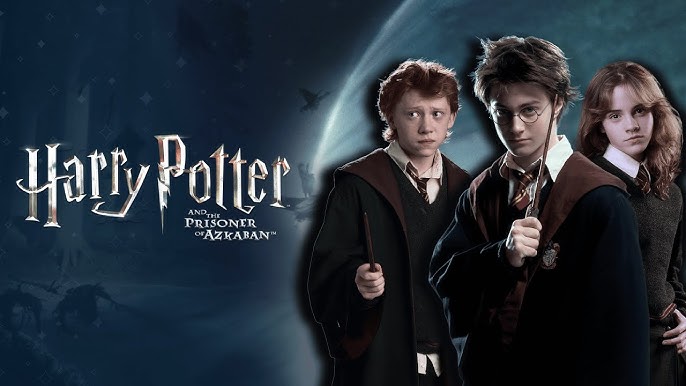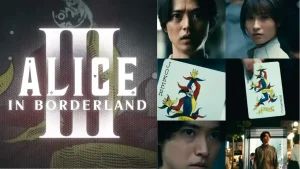
Welcome, magical folk and Potter enthusiasts! Today, we’re delving into Harry Potter and the Prisoner of Azkaban, the 2004 film adaptation of J.K. Rowling’s third book in the beloved Harry Potter series. This installment is a turning point in the series, introducing new characters, deepening the lore, and shifting the tone to a darker, more intricate narrative. Join us as we explore the film’s key moments, themes, and its lasting impact on the Harry Potter saga.
Plot Overview: Mysteries and Revelations
Harry Potter and the Prisoner of Azkaban begins with Harry’s third year at Hogwarts School of Witchcraft and Wizardry. The film opens with Harry (Daniel Radcliffe) spending a tumultuous summer with the Dursleys. The tension is heightened by the escape of Sirius Black (Gary Oldman) from the notorious wizarding prison, Azkaban. Black, a dangerous criminal, is rumored to be after Harry, adding an ominous note to the start of the school year.
Upon returning to Hogwarts, Harry is introduced to new characters, including Professor Remus Lupin (David Thewlis), the new Defense Against the Dark Arts teacher, and the enigmatic Professor Sybill Trelawney (Emma Thompson). The school year is marked by a series of unsettling events, including the presence of the Dementors—Azazkan’s terrifying guards—who are stationed at Hogwarts to capture Sirius Black.
As the year progresses, Harry, Hermione Granger (Emma Watson), and Ron Weasley (Rupert Grint) unravel the mystery behind Sirius Black’s escape and his connection to Harry’s past. The film culminates in a dramatic revelation that changes Harry’s understanding of his own history and the truth about his parents’ death.
Key Themes: Identity, Betrayal, and Redemption
The Quest for Identity
One of the central themes in The Prisoner of Azkaban is the quest for identity. Harry grapples with the discovery of his parents’ past and the true nature of his connection to Sirius Black. The film explores themes of self-discovery and the search for one’s place in the world, as Harry learns more about his own history and the people who shaped his life.
Betrayal and Forgiveness
The theme of betrayal is prominent, particularly in the revelation about Peter Pettigrew (Timothy Spall) and his role in the betrayal of Harry’s parents. The film explores how betrayal can shape relationships and the journey towards understanding and forgiveness. The complex dynamics between Sirius Black, Remus Lupin, and Peter Pettigrew highlight the pain and consequences of betrayal, as well as the possibility of redemption.
The Shadow of Fear
The presence of the Dementors and their impact on Harry’s emotional state underscores the theme of fear and trauma. The Dementors, with their ability to invoke deep-seated fears and painful memories, symbolize the darker aspects of the human psyche. The film portrays how confronting and overcoming one’s fears is a crucial part of personal growth.
Cinematic Magic: A Shift in Tone and Style
Directed by Alfonso Cuarón, The Prisoner of Azkaban represents a notable shift in tone and style compared to the previous films. Cuarón brings a darker, more atmospheric approach to the story, capturing the film’s complex themes and eerie moments with a distinctive visual style.
The film’s cinematography is marked by its moody, gothic aesthetic. From the haunting scenes at the Shrieking Shack to the chilling presence of the Dementors, the visual elements enhance the film’s immersive experience. The special effects are impressive, particularly in the depiction of the Dementors and the time-travel sequences involving Hermione’s Time-Turner.
The performances are a highlight, with Daniel Radcliffe, Rupert Grint, and Emma Watson delivering mature and nuanced portrayals of their characters. Gary Oldman’s performance as Sirius Black adds depth and intensity to the film, while David Thewlis’s portrayal of Professor Lupin brings warmth and complexity to the role.
The Legacy: Expanding the Magical World
Harry Potter and the Prisoner of Azkaban is a crucial installment in the series, expanding the magical world and deepening the overarching narrative. The introduction of key elements, such as the Time-Turner and the complex history of Harry’s parents, adds layers to the story and sets the stage for future developments.
The film also marks a turning point in the series, shifting from the whimsical charm of the earlier films to a darker, more mature tone. This transition reflects the growing complexity of the characters and the increasing stakes of their journey.
Conclusion: A Dark and Enchanting Chapter
Harry Potter and the Prisoner of Azkaban is a standout entry in the Harry Potter series, blending dark themes with magical adventure in a captivating and visually striking way. The film’s exploration of identity, betrayal, and fear adds depth to the saga and sets the stage for the dramatic developments that follow.
As we revisit this magical chapter, we are reminded of the richness and complexity of J.K. Rowling’s world. Whether you’re rewatching for nostalgia or experiencing it anew, The Prisoner of Azkaban offers an engaging and thought-provoking experience that continues to enchant audiences.
Thank you for joining us on this journey through Harry Potter and the Prisoner of Azkaban. Until our next magical adventure, may your days be filled with wonder, courage, and a touch of magic!




